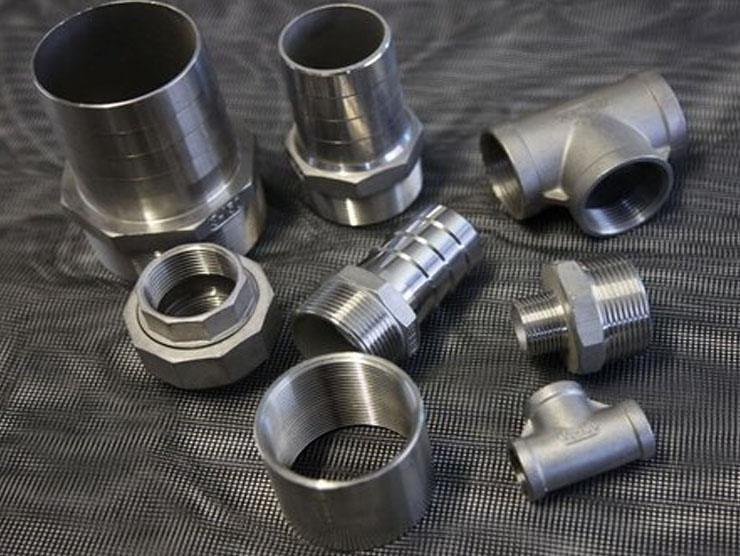Forged sockets are integral components in construction and engineering, providing robust and reliable connections in various applications. These components are produced through forging, a process that enhances their strength and durability, making them ideal for demanding environments. Industries such as construction, automotive, aerospace, and oil and gas rely on forged sockets for their critical operations.
Manufacturing Process of Forged Sockets
The production of forged sockets involves several key steps:
Material Selection: Choosing high-quality metal, such as carbon steel or stainless steel, ensures the final product’s strength and durability.
Heating: The selected metal is heated to a specific temperature to make it malleable for shaping.
Forging: Applying compressive forces shapes the heated metal into the desired socket form, enhancing its mechanical properties.
Machining: Precision machining refines the forged piece to meet exact specifications, ensuring proper fit and function.
Heat Treatment: Processes like quenching and tempering further improve the socket’s hardness and toughness.
Inspection: Rigorous quality checks ensure the forged sockets meet industry standards and are free from defects.
This meticulous process results in forged sockets that offer superior performance in various applications.
Applications in Construction
In the construction industry, forged sockets play a crucial role in ensuring structural integrity and safety. Key applications include:
Scaffolding Systems: Forged sockets provide secure connections between scaffolding components, ensuring stability and safety for workers.
Cranes and Lifting Equipment: These sockets are used in crane assemblies and lifting devices, where their strength supports heavy loads.
Structural Connections: In steel structures, forged sockets connect beams and columns, contributing to the overall stability of buildings and bridges.
The reliability of forged sockets in these applications is paramount, as they must withstand dynamic loads and harsh environmental conditions.
Applications in Engineering
Beyond construction, forged sockets are essential in various engineering sectors:
Automotive Engineering: In vehicles, forged sockets are used in suspension systems and steering mechanisms, where durability and precision are critical.
Aerospace Engineering: Aircraft utilize forged sockets in control systems and landing gear assemblies, benefiting from their high strength-to-weight ratio.
Oil and Gas Industry: Forged sockets are employed in drilling equipment and pipeline assemblies, where they must endure high pressures and corrosive environments.
These applications demand components that can perform reliably under extreme conditions, making forged sockets the preferred choice.
Advantages of Using Forged Sockets
The preference for forged sockets in construction and engineering stems from several advantages:
Enhanced Strength: The forging process aligns the metal’s grain structure, resulting in superior tensile and impact strength.
Improved Durability: Forged sockets exhibit excellent fatigue resistance, extending their service life even under repetitive stress.
Superior Toughness: The refined microstructure of forged sockets allows them to absorb energy and resist fracture, crucial in safety-critical applications.
Precision Fit: Machining after forging ensures that sockets meet exact specifications, facilitating easy assembly and reliable performance.
These benefits make forged sockets indispensable in applications where safety and reliability are paramount.
Material Selection for Forged Sockets
Choosing the appropriate material for forged sockets is crucial to their performance. Common materials include:
Carbon Steel: Offers a good balance of strength and ductility, suitable for general-purpose applications.
Alloy Steel: Enhanced with additional elements like chromium and molybdenum for increased strength and corrosion resistance.
Stainless Steel: Provides excellent corrosion resistance, ideal for applications exposed to harsh environments.
Selecting the right material ensures that the forged sockets can withstand the specific demands of their intended application.
Industry Standards and Specifications
Compliance with industry standards ensures the quality and safety of forged sockets. Relevant standards include:
ASME B16.11: Specifies dimensions and requirements for forged fittings, including socket-weld and threaded types.
ASTM A105: Covers standards for carbon steel forgings used in pressure systems.
ISO 9001:2015: Certifies quality management systems, ensuring consistent production quality.
Adherence to these standards guarantees that forged sockets meet the rigorous demands of construction and engineering applications.
Maintenance and Inspection of Forged Sockets
Regular maintenance and inspection are vital to ensure the longevity and safety of forged sockets:
Visual Inspections: Regular checks for signs of wear, corrosion, or damage.
Non-Destructive Testing (NDT): Techniques like ultrasonic testing detect internal flaws without damaging the component.
Lubrication: Applying appropriate lubricants prevents corrosion and reduces wear in moving parts.
Timely Replacement: Replacing sockets that show signs of significant wear or damage prevents failures in critical applications.
Implementing these practices ensures that forged sockets continue to perform reliably throughout their service life.
Future Trends in Forged Socket Applications
Advancements in materials and manufacturing processes are driving innovations in forged socket applications:
High-Performance Alloys: The development of new alloys offers enhanced properties for specialized applications.
Precision Forging Techniques: Improved forging methods allow for more complex shapes and tighter tolerances.
Sustainability Initiatives: Emphasis on environmentally friendly materials and processes is influencing the production of forged components.
Staying abreast of these trends ensures that industries can leverage the latest technologies to enhance performance and sustainability.
In conclusion, forged sockets are fundamental components in construction and engineering, offering unparalleled strength, durability, and reliability across a wide range of applications.



